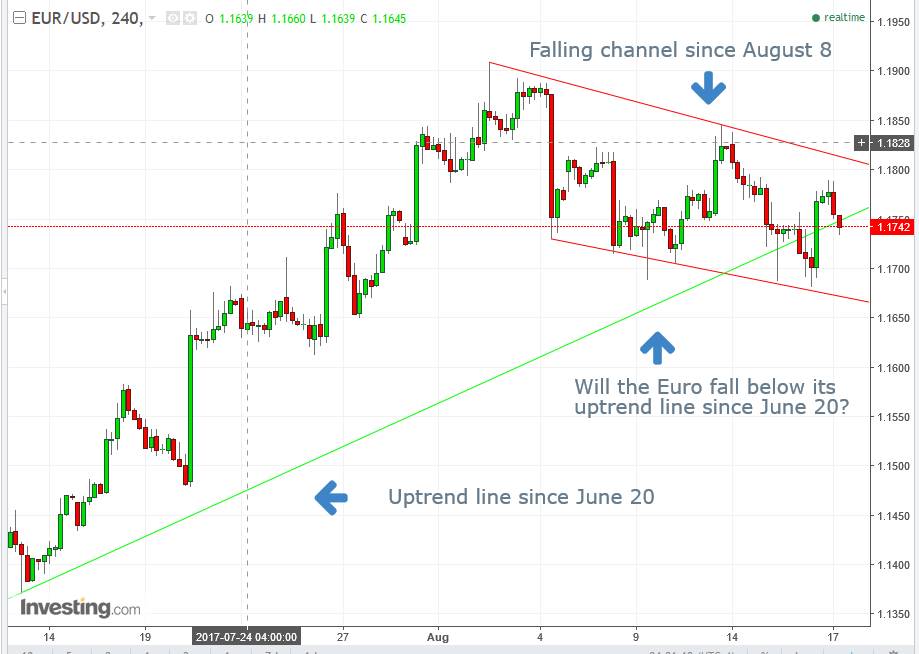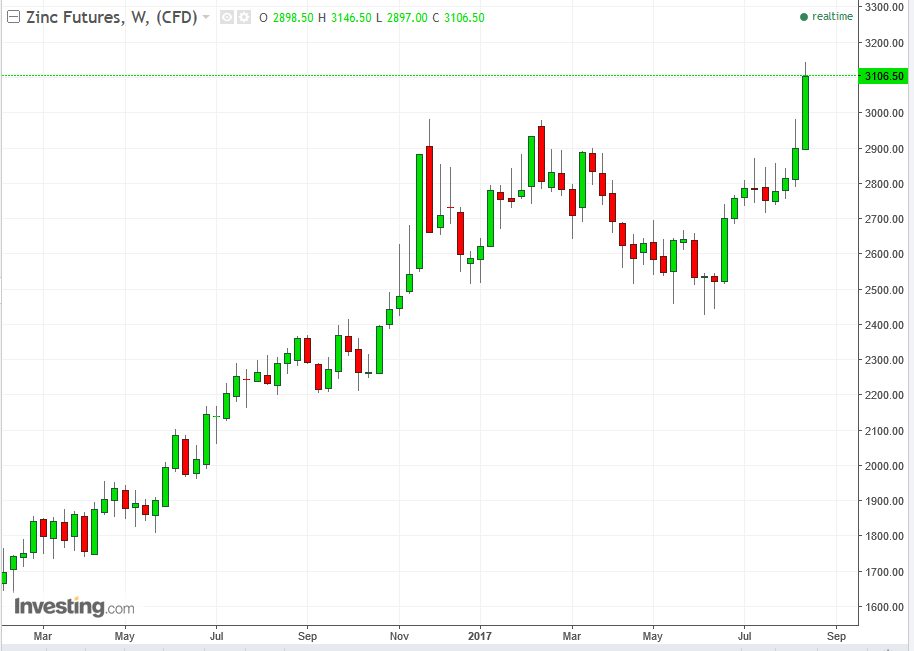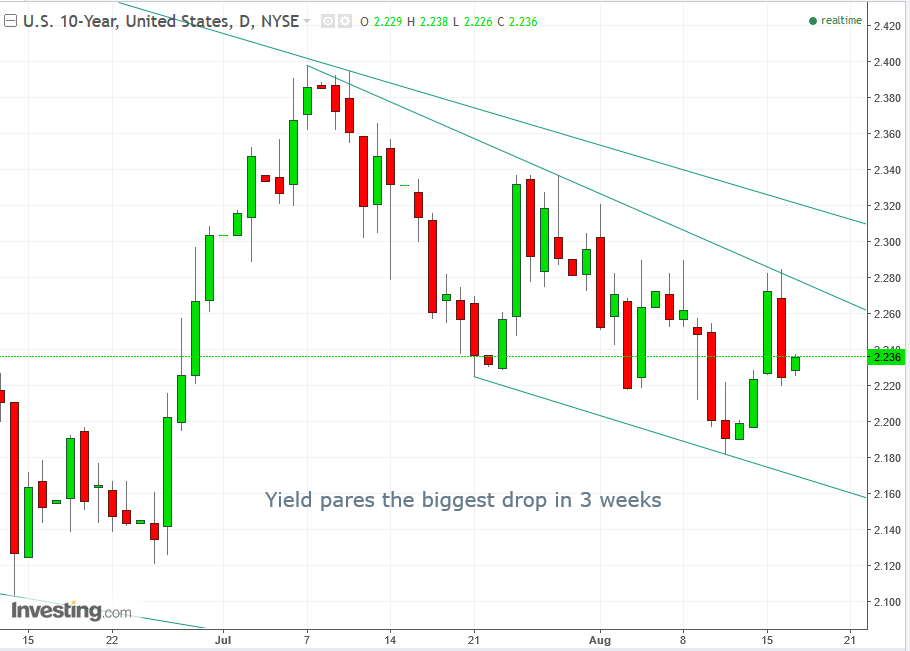by Pinchas Cohen
Key Events
Yesterday, US stocks and Treasuries advanced, while the dollar declined, after the release of the Fed minutes revealed that policymakers are worried about inflation weakening.
Global Affairs
Most Fed officials remained steadfast at the two-day FOMC meeting in July 25-26 on their outlook that inflation would eventually reach their 2-percent target “…over the next couple of years”, with only a few projecting it would shrink.
There is also a lack of consensus on the reduction of its $4.2 trillion balance sheet of Treasuries and mortgage-backed securities.
While some are ready to set a date, others stated that it was “generally agreed…it was appropriate…relatively soon, absent significant adverse developments in the economy or in the financial markets.”
In the US markets the FOMC minutes saved the day for stock traders as it shifted focus away from news of President Donald Trump’s breaking up his business forum, after a group of CEOs quit in response to his remarks on race and violence. This in turn sparked additional fears of Trump policy failure which reversed an earlier loss in US markets which closed with a miniscule gain. On the other hand, dollar traders didn’t like what the minutes revealed, pushing the USD to a lower close, while Treasuries finished higher.
Equity investors favor a slower path toward interest rates, as it makes liquidity more available to continue to prop up equity valuations, which are as high as they were only in two other times in history—1929 and 2000—right before US markets crashed. In addition, a cheaper dollar gives the added benefit of making US stocks more affordable for foreign investors.
On the other end of the spectrum dollar speculators are against a slower rate process, as it means the asset will provide a smaller payout.
Finally, Treasury traders have a bigger incentive to buy now, as the current yield suddenly seems higher when compared to a lower-than-expected returns later.

Oil fell 1.75 percent, despite steep decline in US crude inventories, as American output hit a 2-year high. These two opposing forces—rising production versus falling stockpiles—has dominated the price of oil since June 21, when it began its 20-percent climb from the low of $42.05 to its high of $50.41 on July 31. Crude has found support in the short-term corrective uptrend line. A close beneath $46 may be may be the signals traders need in order to short oil back and retest the $42 levels and beyond.
Today, European stocks declined after a mixed Asian session, which fell on a rising yen but whose technology sector advanced after Tencent Holdings (OTC:TCEHY) reported spectacular corporate results.
Shares in Japan and Australia declined, while they advanced in South Korea, proving last week’s North Korean tensions were a non-issue.
US futures are signaling that US shares may open lower, with the NASDAQ leading the decline with a 0.23 percent fall.
Government bonds followed Treasuries higher while the dollar recovered after extending yesterday’s post Fed-minutes release loss, reducing the odds of another US interest rate increase this year.
Banks led the STOXX 600 Index in a decline, while the impending ECB minutes release led the euro lower—despite signals that they are closer to phasing out quantitative easing.

Reuters reported that the ECB President Mario Draghi will not deliver a fresh policy message at the Federal Reserve Annual symposium in Jackson Hole, Wyoming later this month. The euro is caught between long-term buying which has been reflected in the long-term uptrend line since June 20, while short-term selling has been seen in the falling channel since August 8.

Gold and tin were the best performers among metals, while zinc neared a 10-year high.
Market Moves
Stocks
- The Stoxx Europe 600 Index dipped 0.1 percent as of 8:31 a.m. in London (3:31 EDT).
- S&P 500 Futures advanced less than 0.05 percent.
Currencies
- The euro dipped 0.1 percent to $1.1759.
- The Dollar Index recovered from a 0.14 percent decline and registered a 0.17 percent advance.
- The British pound decreased less than 0.05 percent to $1.2886.
Bonds

- The yield on 10-year Treasuries advanced one basis point to 2.23 percent.
- Britain’s 10-year yield dipped two basis points to 1.087 percent.
- Germany’s 10-year yield decreased one basis point to 0.43 percent.
Commodities
- Gold increased 0.4 percent to $1,288.10 an ounce.
- Copper on the London Metal Exchange advanced less than 0.05 percent to $6,534.50 per metric ton, its highest in almost three years.
- West Texas Intermediate crude climbed 0.2 percent to $46.88 a barrel.
